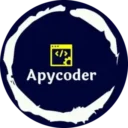Introduction
Hey everyone, Asif Khan here! If you’re into Python, IoT, and real-time applications, you must have come across Solara and Streamlit—two amazing frameworks for building web apps using Python. But when it comes to real-time IoT projects, which one is faster and more efficient?
In this blog, I’ll compare Solara and Streamlit based on performance, real-time capabilities, and ease of use for IoT applications. Let’s dive in! 🚀
1. What Are Solara and Streamlit?
Solara
Solara is a Python-based framework designed for reactive web applications. It allows developers to build web interfaces using pure Python, similar to Dash and Streamlit, but with more flexibility for real-time updates.
Streamlit
Streamlit is a popular Python framework that lets you create data-driven web applications with minimal effort. It is widely used for prototyping dashboards, AI applications, and IoT monitoring systems.
2. Performance Comparison: Solara vs. Streamlit for IoT
Speed and Real-Time Updates
| Feature | Solara | Streamlit |
|---|---|---|
| UI Rendering | Fast, uses a reactive model | Slightly slower, requires re-running scripts |
| WebSockets Support | Built-in for real-time updates | Limited real-time interaction |
| State Management | More efficient with live updates | Stateful but refresh-based |
| Performance for IoT | Ideal for fast response applications | Better for data visualization |
✅ Winner: Solara (faster real-time updates, better state management)
3. Real-Time Capabilities for IoT Applications
Solara
- Uses a reactive programming model, making it ideal for IoT applications where sensor data changes frequently.
- Built-in WebSockets support for live updates without refreshing the page.
- Works well for real-time dashboards displaying IoT sensor readings.
Streamlit
- Stateful execution helps in monitoring IoT devices, but lacks native WebSockets support.
- Every update requires re-running the script, making it slower for high-frequency data changes.
- More suitable for batch IoT data analysis than real-time interaction.
✅ Winner: Solara (better for real-time IoT device control)
4. Ease of Development and Integration
Solara
- Works well with Jupyter Notebooks.
- Requires learning reactive programming.
- Needs manual UI layout management.
Streamlit
- Super easy to use, with minimal coding required.
- Automatically arranges UI components.
- More user-friendly for beginners.
✅ Winner: Streamlit (easier setup and UI development)
5. Best Choice for IoT Applications?
| Use Case | Best Framework |
|---|---|
| Real-time IoT dashboards | Solara |
| Live sensor monitoring | Solara |
| IoT analytics and reports | Streamlit |
| Rapid prototyping of IoT apps | Streamlit |
Final Verdict
- If you need real-time updates and fast device control, Solara is the best choice.
- If you want a simple and quick IoT monitoring dashboard, Streamlit is a great option.
🚀 For real-time IoT projects, Solara is the better choice!
Conclusion
Both Solara and Streamlit have their strengths when it comes to IoT applications:
- Solara excels in real-time performance and WebSockets support.
- Streamlit is easier to use and great for IoT data visualization.
If you’re building an IoT project that requires real-time control and live sensor updates, go with Solara. If you just need a simple monitoring dashboard, Streamlit is a solid choice.
💬 Which one do you prefer? Let me know in the comments! Also, don’t forget to check out my YouTube channel and blog for more IoT and Python tutorials.
📌 Follow me for more updates:
